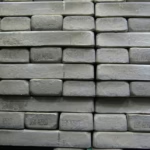From Veins to Arteries: The Journey of Blood through Your Body
Introduction
The human circulatory system is an intricate network that serves a pivotal role in maintaining overall health and sustaining life. Every second, blood circulates throughout the body, delivering essential nutrients and oxygen while removing waste products. This article embarks on an exploration of how blood travels from the veins to the arteries, detailing the evolution of blood as it moves through the body’s vast circulatory system.
The Basics of the Circulatory System
The circulatory system, also known as the cardiovascular system, comprises the heart, blood, and a vast network of blood vessels. Its primary functions include transporting oxygen, nutrients, hormones, and waste products. The system consists of two main components: the pulmonary circulation, which oxygenates blood via the lungs, and the systemic circulation, which distributes oxygen-rich blood to the rest of the body.
Structure of Blood Vessels
-
Arteries: These vessels carry oxygen-rich blood away from the heart. They are characterized by thick, elastic walls that can withstand high pressure generated by the heart’s pumping action (source).
-
Veins: In contrast, veins transport deoxygenated blood back to the heart. Veins have thinner walls and larger diameters than arteries, helping them accommodate the lower pressure in the venous system. They also contain valves that prevent backflow of blood (source).
- Capillaries: These are the smallest blood vessels, acting as bridges between arteries and veins. Their thin walls enable the exchange of oxygen, carbon dioxide, nutrients, and waste at the cellular level (source).
The Journey Begins: From the Heart
The journey of blood through the body begins in the heart, a muscular organ that functions as a pump to circulate blood. The heart consists of four chambers: two atria (upper chambers) and two ventricles (lower chambers).
-
Heart Structure:
- Right Atrium: Receives deoxygenated blood from the body via the superior and inferior vena cava.
- Right Ventricle: Pumps deoxygenated blood to the lungs through the pulmonary arteries.
- Left Atrium: Receives oxygenated blood from the lungs via the pulmonary veins.
- Left Ventricle: Pumps oxygenated blood to the body through the aorta.
- Mechanics of Circulation:
When the heart beats, it goes through a cycle of contraction (systole) and relaxation (diastole). During systole, the ventricles contract, propelling blood into the pulmonary and systemic circuits. During diastole, the heart chambers fill with blood. This rhythmic cycle ensures continuous circulation.
Pathway of Blood: From Veins to Arteries
To understand the journey of blood, it helps to break it down into distinct phases:
-
Entering the Heart:
- Blood returns to the heart from the body through the veins. Deoxygenated blood enters the right atrium, where it is temporarily stored before moving into the right ventricle.
-
To the Lungs:
- The right ventricle contracts, sending blood into the pulmonary arteries that lead to the lungs. Here, carbon dioxide is exchanged for oxygen in capillaries wrapped around alveoli, the tiny air sacs in the lungs.
-
Back to the Heart:
- Once oxygenated, blood travels through the pulmonary veins into the left atrium. This is the transition where blood is transformed, having shed carbon dioxide and absorbed oxygen.
-
Pumping to the Body:
- Blood moves from the left atrium to the left ventricle, which contracts forcefully, propelling oxygen-rich blood into the aorta. This major artery branches off into various arteries that distribute blood throughout the body.
-
Distribution to the Tissues:
- As arteries branch out into smaller arterioles and eventually into capillaries, blood flows steadily through the network, delivering oxygen and nutrients to cells. The exchange of gases occurs, with carbon dioxide and other wastes entering the bloodstream.
- Returning to the Heart:
- After the exchange, the now deoxygenated blood travels through venules, into veins, and back to the right atrium of the heart, where the cycle begins anew.
The Role of Capillaries
Capillaries are often referred to as the "site of exchange." These tiny vessels play a crucial role in the circulatory system:
- Structure: Capillary walls are just one cell thick, which facilitates the diffusion of gases and nutrients.
- Exchange Process: Oxygen diffuses from the blood into tissues, while carbon dioxide and waste products move from tissues into the blood (source).
Factors Influencing Blood Circulation
Several factors influence the efficiency of blood circulation:
-
Heart Rate: The speed at which the heart pumps affects the rate of blood flow. A higher heart rate increases circulation but may also put additional strain on the heart over time.
-
Blood Pressure: Blood pressure is the force of blood against the walls of the blood vessels. High blood pressure can damage arteries and lead to cardiovascular disease.
-
Vascular Health: The health of blood vessels impacts circulation. Conditions such as atherosclerosis, where arteries become narrowed due to plaque buildup, can restrict blood flow.
-
Physical Activity: Exercise enhances circulation by increasing heart rate and promoting the dilation of blood vessels, leading to improved oxygen delivery to tissues.
- Diet: Nutrition plays a significant role in circulatory health. Diets high in saturated fats can lead to plaque buildup, while fruits and vegetables promote vascular health.
The Importance of Blood Circulation
Adequate blood circulation is vital for numerous reasons:
-
Oxygen Delivery: Every cell in the body requires oxygen to function properly. Impaired circulation can lead to oxygen deprivation, resulting in conditions like fatigue and in severe cases, organ dysfunction.
-
Nutrient Supply: Blood transports essential nutrients from the digestive system to cells, affecting growth, repair, and energy production (source).
-
Waste Removal: Efficient circulation aids in removing metabolic waste products like urea and carbon dioxide, preventing toxic buildup.
-
Immune Function: Blood contains white blood cells and antibodies that help fend off infections and illnesses, illustrating the circulatory system’s role in immune health.
- Thermoregulation: Blood circulation plays a key role in regulating body temperature, as blood can distribute heat generated by metabolic processes.
Consequences of Poor Circulation
Inadequate blood circulation can lead to various health issues:
-
Peripheral Artery Disease (PAD): Narrowed arteries can lead to reduced blood flow to limbs, causing pain and mobility issues.
-
Deep Vein Thrombosis (DVT): Poor circulation can lead to blood clots forming in deep veins, particularly in the legs, which can be life-threatening if they travel to the lungs (pulmonary embolism).
-
Heart Disease: Conditions like coronary artery disease arise when plaque builds up in arteries, restricting blood supply to the heart and leading to heart attacks.
- Stroke: A lack of blood flow to the brain can cause strokes, resulting in lasting cognitive and physical impairments.
Tips for Maintaining Healthy Blood Circulation
To promote optimal blood circulation, consider the following lifestyle changes:
-
Stay Active: Regular exercise improves heart health, increases blood flow, and helps maintain a healthy weight.
-
Eat a Balanced Diet: Incorporate fruits, vegetables, whole grains, lean proteins, and healthy fats to support vascular health.
-
Stay Hydrated: Maintaining hydration is essential for blood volume and circulation.
-
Avoid Smoking: Tobacco use can damage blood vessels and negatively impact circulation.
- Manage Stress: Practices like yoga, meditation, and regular physical activity can help reduce stress, which is beneficial for heart health.
Conclusion
The journey of blood through the body is a fascinating and complex process vital for human life. Understanding how blood transitions from veins to arteries enhances our appreciation of the circulatory system’s role in health and wellbeing. By taking proactive steps to maintain healthy circulation, we can support our body’s functions and promote longevity.
References
- National Center for Biotechnology Information. “Circulatory System.” NCBI.
This article offers a comprehensive look at blood circulation, but the complexity of the human body means there’s always more to explore and understand about the intricate workings of our systems.


























Add Comment